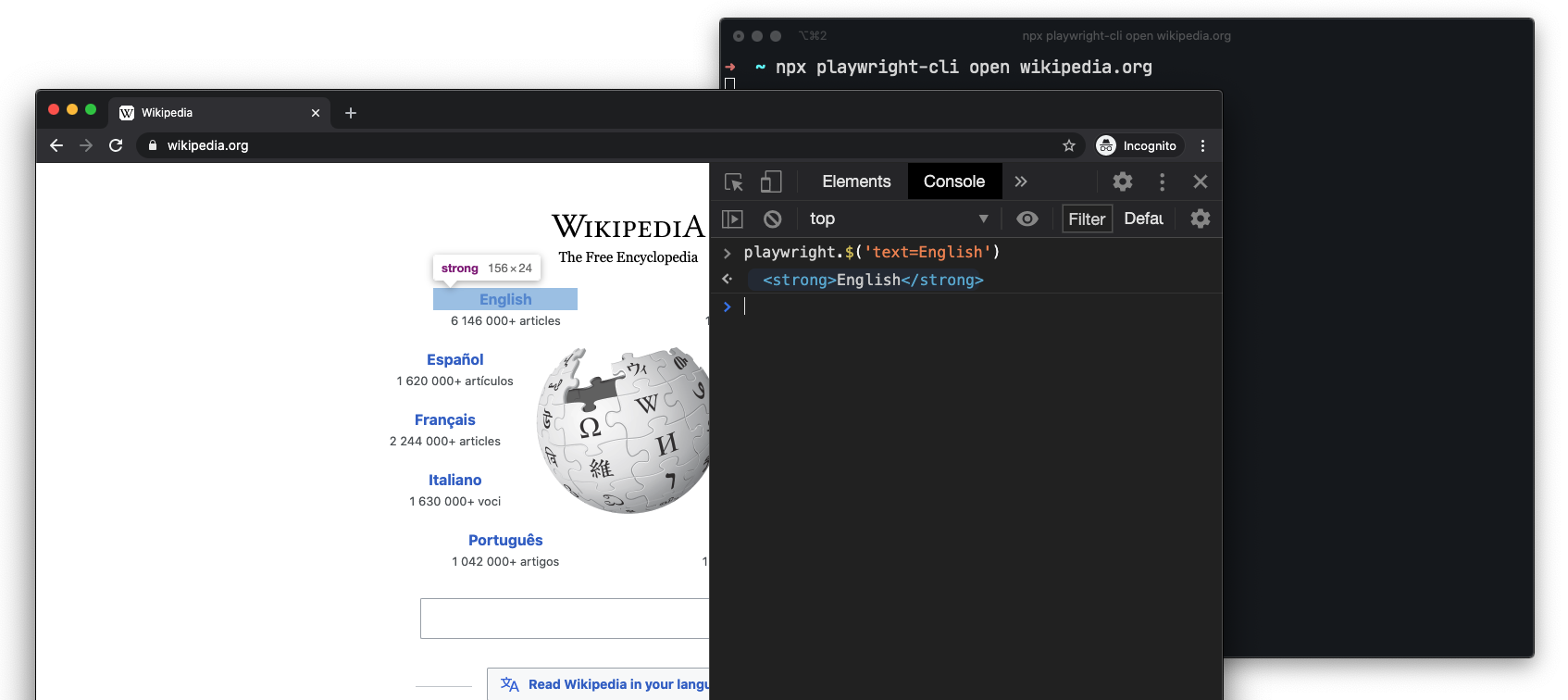Command line tools
Playwright comes with the command line tools.
Usage
npx playwright --help
# Running from `package.json` script
{
"scripts": {
"help": "playwright --help"
}
}
Install browsers
Playwright can install supported browsers.
# Running without arguments will install default browsers
npx playwright install
You can also install specific browsers by providing an argument:
# Install WebKit
npx playwright install webkit
See all supported browsers:
npx playwright install --help
Install system dependencies
System dependencies can get installed automatically. This is useful for CI environments.
# See command help
npx playwright install-deps
You can also install the dependencies for a single browser only by passing it as an argument:
npx playwright install-deps chromium
It's also possible to combine install-deps with install and install by that the browsers and OS dependencies with a single command. This would do both for Chromium, but you can also leave it out.
npx playwright install --with-deps chromium
Generate code
npx playwright codegen wikipedia.org
Run codegen and perform actions in the browser. Playwright CLI will generate JavaScript code for the user interactions. codegen will attempt to generate resilient text-based selectors.

Preserve authenticated state
Run codegen with --save-storage to save cookies and localStorage at the end. This is useful to separately record authentication step and reuse it later.
npx playwright codegen --save-storage=auth.json
# Perform authentication and exit.
# auth.json will contain the storage state.
Run with --load-storage to consume previously loaded storage. This way, all cookies and localStorage will be restored, bringing most web apps to the authenticated state.
npx playwright open --load-storage=auth.json my.web.app
npx playwright codegen --load-storage=auth.json my.web.app
# Perform actions in authenticated state.
Codegen with custom setup
If you would like to use codegen in some non-standard setup (for example, use browserContext.route(url, handler[, options])), it is possible to call page.pause() that will open a separate window with codegen controls.
const { chromium } = require('playwright');
(async () => {
// Make sure to run headed.
const browser = await chromium.launch({ headless: false });
// Setup context however you like.
const context = await browser.newContext({ /* pass any options */ });
await context.route('**/*', route => route.continue());
// Pause the page, and start recording manually.
const page = await context.newPage();
await page.pause();
})();
Open pages
With open, you can use Playwright bundled browsers to browse web pages. Playwright provides cross-platform WebKit builds that can be used to reproduce Safari rendering across Windows, Linux and macOS.
# Open page in Chromium
npx playwright open example.com
# Open page in WebKit
npx playwright wk example.com
Emulate devices
open can emulate mobile and tablet devices from the playwright.devices list.
# Emulate iPhone 11.
npx playwright open --device="iPhone 11" wikipedia.org
Emulate color scheme and viewport size
# Emulate screen size and color scheme.
npx playwright open --viewport-size=800,600 --color-scheme=dark twitter.com
Emulate geolocation, language and timezone
# Emulate timezone, language & location
# Once page opens, click the "my location" button to see geolocation in action
npx playwright open --timezone="Europe/Rome" --geolocation="41.890221,12.492348" --lang="it-IT" maps.google.com
Inspect selectors
During open or codegen, you can use following API inside the developer tools console of any browser.

playwright.$(selector)
Query Playwright selector, using the actual Playwright query engine, for example:
> playwright.$('.auth-form >> text=Log in');
<button>Log in</button>
playwright.$$(selector)
Same as playwright.$, but returns all matching elements.
> playwright.$$('li >> text=John')
> [<li>, <li>, <li>, <li>]
playwright.inspect(selector)
Reveal element in the Elements panel (if DevTools of the respective browser supports it).
> playwright.inspect('text=Log in')
playwright.locator(selector)
Query Playwright element using the actual Playwright query engine, for example:
> playwright.locator('.auth-form', { hasText: 'Log in' });
> Locator ()
> - element: button
> - elements: [button]
playwright.selector(element)
Generates selector for the given element.
> playwright.selector($0)
"div[id="glow-ingress-block"] >> text=/.*Hello.*/"
Take screenshot
# See command help
npx playwright screenshot --help
# Wait 3 seconds before capturing a screenshot after page loads ('load' event fires)
npx playwright screenshot \
--device="iPhone 11" \
--color-scheme=dark \
--wait-for-timeout=3000 \
twitter.com twitter-iphone.png
# Capture a full page screenshot
npx playwright screenshot --full-page en.wikipedia.org wiki-full.png
Generate PDF
PDF generation only works in Headless Chromium.
# See command help
npx playwright pdf https://en.wikipedia.org/wiki/PDF wiki.pdf